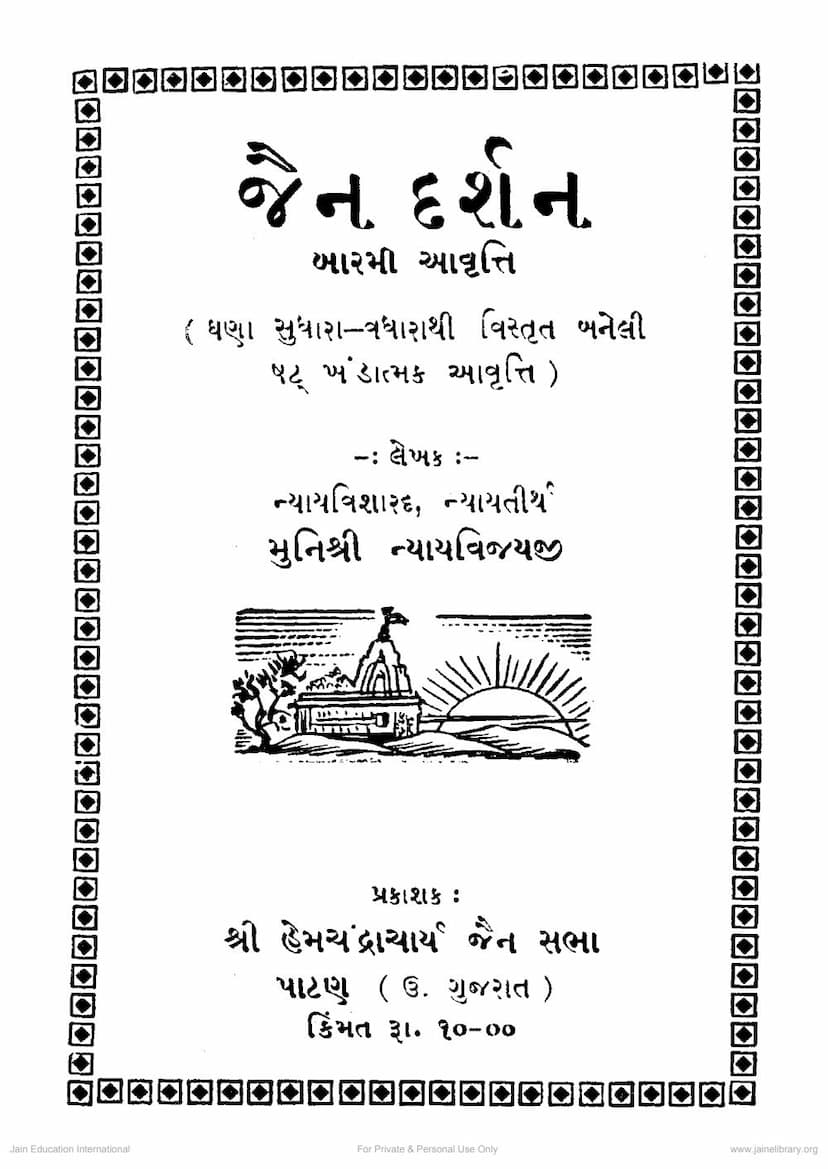Jain Darshan
Added to library: September 1, 2025

Summary
It appears you've provided the first few pages of the book "Jain Darshan" by Muni Shri Nyayavijayji, along with some catalog links and page markers. Unfortunately, the provided text is in Gujarati, and while it mentions "Jain Darshan," it's not a text that I can directly summarize as a whole without a comprehensive overview of its content.
However, based on the title, author, and the context of Jain philosophical texts, I can infer the likely subject matter and provide a general summary of what such a book would typically cover.
General Summary of "Jain Darshan" (Jain Philosophy):
A book titled "Jain Darshan" by a Jain Muni like Nyayavijayji, especially one that has gone through multiple editions and is likely used in educational curricula, would typically offer a comprehensive and systematic exposition of Jain philosophy. Such a book would delve into the core principles and tenets of Jainism, aiming to provide clarity and understanding to its readers.
Key areas likely covered in "Jain Darshan" would include:
-
Core Jain Principles:
- Anekantavada (Multifaceted Reality): The principle that reality is viewed from multiple viewpoints and that no single perspective captures the whole truth. This is often explained through the concept of Syadvada.
- Ahimsa (Non-violence): The paramount principle of non-violence in thought, word, and deed towards all living beings, considered the foundational virtue.
- Aparigraha (Non-possession/Non-attachment): The concept of detachment from worldly possessions and desires as a path to liberation.
- Anekantavada (Non-absolutism/Many-sidedness): The doctrine that reality has infinite aspects and that truth can only be apprehended through a combination of different viewpoints.
-
Tattvas (Realities): A detailed explanation of the seven fundamental realities or principles of Jainism (Jiva, Ajiva, Punya, Papa, Asrava, Samvara, Bandha, Nirjara, Moksha). The text would likely explain their nature, characteristics, and interrelationships.
-
The Path to Liberation (Moksha Marga):
- Samyak Darshan (Right Faith): The correct understanding and faith in Jain principles.
- Samyak Gyan (Right Knowledge): Accurate and comprehensive knowledge of realities.
- Samyak Charitra (Right Conduct): The practice of Jain ethical principles and vows in daily life, including the five great vows (Mahavratas) for ascetics and their milder forms (Anuvratas) for laypeople.
-
Karma Theory: The intricate Jain explanation of karma, its bondage, manifestation, and eventual shedding, which is central to understanding the soul's journey and liberation.
-
Jain Cosmology and Ontology: Descriptions of the universe, its eternal nature, the realms of existence, and the categories of beings.
-
Ethical and Spiritual Practices: The text would likely elaborate on the practices necessary for spiritual progress, such as meditation, fasting, austerity, and the importance of the monastic and lay disciplines.
-
Key Figures and Texts: It might also touch upon the lives of Tirthankaras, important Jain scholars, and seminal Jain scriptures.
The publisher, Hemchandracharya Jain Gyanmandir Patan, suggests a focus on classical and scholarly Jain literature. The author, Muni Shri Nyayavijayji, being a learned Muni, would ensure a deep and accurate presentation of Jain philosophy.
To provide a more specific summary, I would need either a translation of the Gujarati text or a summary of its content in English. However, if you can provide a translation or more specific details about the book's focus, I can offer a more tailored summary.